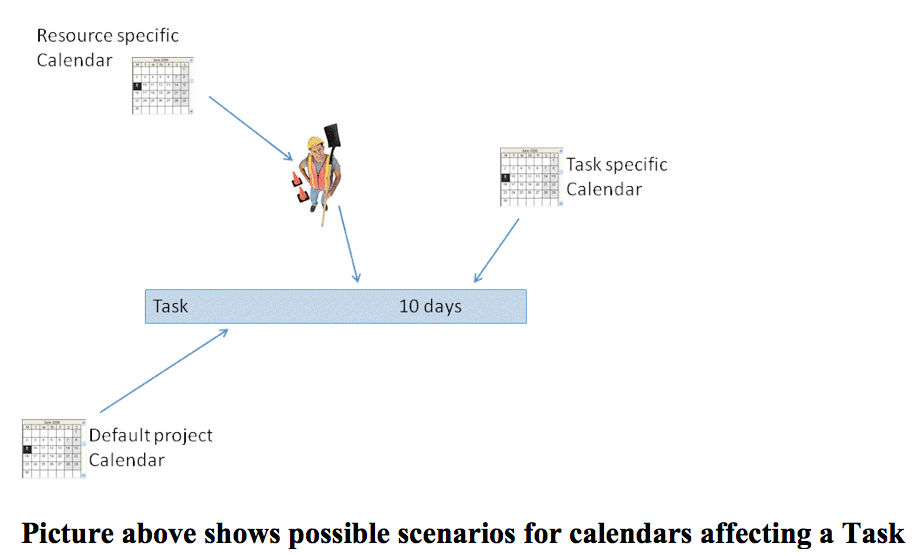Managing project calendars
Are project calendars, simple? Maybe not.
Firstly, non-working time seems like a basic concept. Have you ever thought about two tasks linked together? What happens if they are on different calendars?

On the same calendar, all goes well (see above, Tasks A and B). When they are on different calendars, which calendar does the logic link use? MS Project 2003–2010 used Successor’s tasks calendar, MS Project 2000–2002 used the project’s default calendar.
Primavera P3 & SureTrak used Predecessor’s tasks calendar; Primavera P6 has a choice for each project, either Predecessor, Successor, Project Default or 24 hours. Users get quite confused as to why tasks are scheduled when they are.
Tip #1: be aware!
Secondly, have you ever tried changing the hours per day from the default of eight hours hours per day? Tip #2: don’t!
Regardless of the number of hours your project or business actually works, ask yourself “am I scheduling to the nearest hour or nearest day?” If nearest day, who cares what time you start? Users who dabble with the hours per day or start/finish times will rapidly end up with a messy schedule where tasks trickle over to the next day with durations that might change too.
Users of Primavera P6 are probably already aware of this with some dates defaulting to 8am, others midnight.
Thirdly, when you move away from the standard calendar to a user-defined calendar, things also get messy.
Tip #3: modify standard calendar rather than creating a new calendar.
So many things are tied to the standard calendar, such as the shaded non-work time in the timescale as well as the default calendar for any new resources.
Fourthly, there is resourcing and the associated calendar.
People often try to use this feature to model leave. There will be a different outcome depending on which task type (e.g. fixed duration) is used and how calendars are applied. Users then get quite confused as to why some tasks appear to be delayed or why they are getting odd error messages when using fixed duration.
This is further compounded if users of MS Project use elapsed days as a duration or lag.
Tip #4: keep it simple and avoid resource specific calendars or elapsed days in durations or lags. Take planning for leave offline and reflect through manual rescheduling.
Finally there is collaboration, when groups of projects are working on similar calendars. Primavera’s P6 and MS Project server address this through the concept of Global calendars. MS Project standalone users need to do this manually.
Tip #5: adopt scheduling standards and start planning from a template file which contains the latest calendar.
Calendars, who would have thought you could write 500 words on calendars?
Thanks to Paul Harris (www.eh.com.au) for his input.



